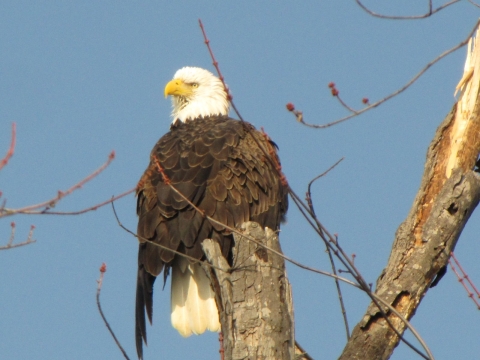Facility Activities
Most of Carlton Pond Waterfowl Production Area is a shallow freshwater pond formed by an earthen dam. Pond waters attract many species of water birds, including common loons, great blue herons, wood ducks, American black ducks, pintails, blue and green-winged teal, cormorants, and others. Bald eagles are often seen, as are ospreys diving into the still waters for fish. Peregrine falcons migrate through the area each year, and are sometimes seen by visitors.
Many wood duck boxes have been placed in and around Carlton Pond over the years. These duck boxes are maintained by volunteers and are consistently productive, providing canoeists with a close-up view of wildlife activities.



